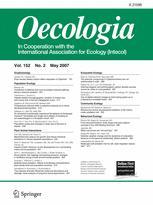When carnivores are “full and lazy“
Jonathan M. Jeschke – 2007
Are animals usually hungry and busily looking for food, or do they often meet their energetic and other needs in the 24 h of a day? Focusing on carnivores, I provide evidence for the latter scenario. I develop a model that predicts the minimum food abundance at which a carnivore reaches satiation and is released from time constraints. Literature data from five invertebrate and vertebrate species suggest that food abundances experienced in the field often exceed this threshold. A comparison of energetic demands to kill rates also suggests that carnivores often reach satiation: for the 16 bird and mammal species analyzed, this frequency is 88% (average across species). Because pressure of time would likely lead to trade-offs in time allocation and thus to a nonsatiating food consumption, these results suggest that carnivores are often released from time constraints.

